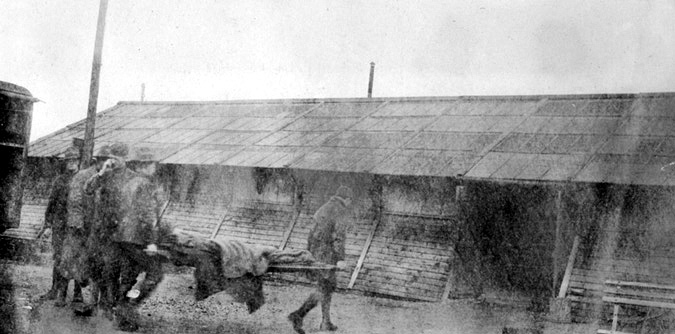
 |
|
| During the summer of 1917, when the Americans took over British General Hospital No. 12, the fairly light patient load gave the unit ample time to adjust to war conditions. The wounded usually arrived at night, after a long train ride from the battle zone. The patients were not labeled according to the nature of their wounds, but this posed few problems during periods of light fighting. As the patient load increased, Base Hospital 21 had to develop a more efficient method of receiving casualties. To improve efficiency in handling large numbers of wounded, advance Casualty Clearing Stations were established closer to the battle lines. Emergency care was administered and the wounded were screened, labeled according to type of wound, and assigned to an appropriate base hospital. Each base hospital, in rotation, was responsible for staffing these Casualty Clearing Stations. Once the casualties arrived at the base hospital, the ambulatory and stretcher wounded could be further diagnosed and treated. | |